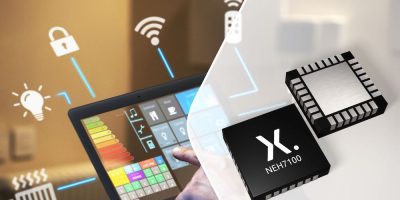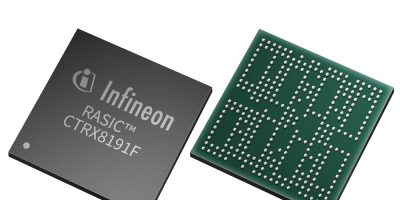Nexperia is expanding its energy harvesting portfolio with the NEH71x0 power management IC (PMIC) family. This advanced PMIC line combines performance, cost-efficiency, and versatility, setting a new standard in sustainable design for low power applications. These devices eliminate the need for an external inductor, reducing circuit board space and bill-of-materials (BOM) cost. It is available in a compact 4 mm x 4 mm QFN28 package. Applications include remote controls, key fobs, smart tags, asset trackers, occupancy sensors, environmental monitors, wearables, keyboards, tire pressure monitors, and any number of Internet of Things (IoT) applications.
These new PMICs represent a complete power management solution for energy harvesting: enabling engineers to extend battery life, recharge batteries or supercapacitors, and even eliminate batteries in certain designs, thanks to its cold start feature. With the NEH71x0 (NEH7100BU, NEH7110BU) PMICs, designers can choose from multiple ambient power sources such as light, kinetic/piezo or a temperature gradient. With an input power range from 15μW to 100mW, these high-performance energy harvesting ICs can convert energy with an efficiency of up to 95%. These devices include an on-chip maximum power point tracking (MPPT) adaptive algorithm to optimise the energy harvested, which adapts every 0.5 second, making the PMIC extremely responsive to changing environmental conditions.
The NEH71x0 family integrates a range of power management features to protect batteries and storage elements, including over-voltage protection, low-voltage detection, and over-current protection. The addition of a low dropout (LDO) regulator and USB charging further reduces the BOM cost and simplifies the design process. For greater functionality, the NEH710BU variant includes I2C programmability and measurement readings, giving engineers additional flexibility and control in their designs.
NEH71x0 complements NEH2000, Nexperia’s first energy harvesting power management IC – a compact, low-BOM converter – by adding more advanced energy harvesting features and a new set of power management features, marking the next step in a growing roadmap of innovative inductor-less energy harvesting products.







